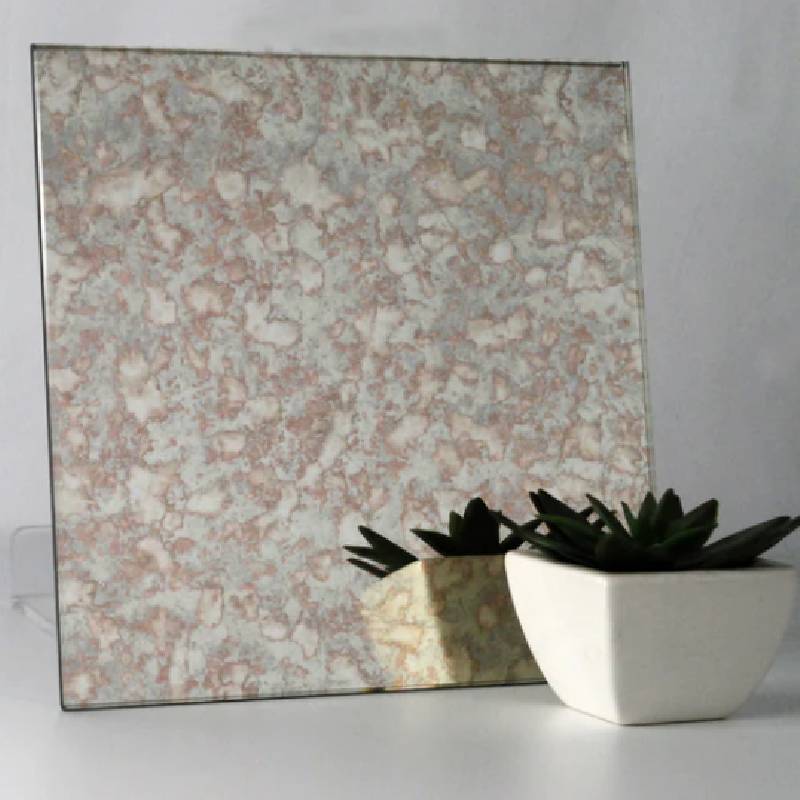The Ubiquitous Magic of White Float Glass
White float glass, an architectural and artistic marvel, is an essential element in modern construction and design. This seemingly simple material holds a unique position in the world of glass manufacturing, thanks to its unparalleled clarity, strength, and versatility.
Float glass gets its name from the process by which it's made - floating molten glass on a bed of molten tin. The result is a perfectly flat, uniform sheet with a smooth surface on both sides. When this glass is tinted white, it becomes the much-admired white float glass. The white tint not only imparts a clean, pristine appearance but also enhances light reflection and diffusion, making it ideal for various applications.
The production of white float glass begins with a blend of raw materials, primarily silica sand, limestone, soda ash, and recycled glass. These are heated to an intense temperature, around 1700°C, transforming them into a molten state. The molten glass is then poured onto a bath of molten tin, where it spreads evenly and cools slowly, creating its signature flatness. The final touch is the annealing process, which relieves internal stresses and ensures durability.
White float glass is celebrated for its aesthetic appeal. Its pure white color gives rooms an open, airy feel, augmenting natural light and creating an illusion of spaciousness. It's commonly used in windows, doors, and skylights, offering a sleek, contemporary look while maintaining functionality. Moreover, due to its excellent thermal insulation properties, it contributes significantly to energy efficiency in buildings Moreover, due to its excellent thermal insulation properties, it contributes significantly to energy efficiency in buildings

Moreover, due to its excellent thermal insulation properties, it contributes significantly to energy efficiency in buildings Moreover, due to its excellent thermal insulation properties, it contributes significantly to energy efficiency in buildings
 white float glass
white float glass.
Beyond architecture, white float glass finds its way into the world of art and design. Artists utilize its transparency and reflective qualities to create stunning installations and sculptures. In furniture and interior design, it adds a touch of sophistication and elegance, often seen in table tops, shelves, and partitions.
In the realm of technology, white float glass serves as a base for various glass products, including LCD screens, solar panels, and even smartphone displays. Its purity ensures optimal performance for these high-tech applications.
Despite its widespread use, the importance of white float glass often goes unnoticed. It silently contributes to the aesthetics, functionality, and energy efficiency of our built environment. Its enduring popularity is a testament to the genius of its creation and the endless possibilities it presents.
In conclusion, white float glass is more than just a material; it's a canvas for architects, a medium for artists, and a solution for engineers. Its beauty lies not only in its appearance but also in its ability to adapt to diverse needs and environments. As technology advances and sustainability becomes a priority, the significance of white float glass is likely to grow, shaping the future of design and construction in a cleaner, brighter, and more innovative way.
 Afrikaans
Afrikaans  Albanian
Albanian  Amharic
Amharic  Arabic
Arabic  Armenian
Armenian  Azerbaijani
Azerbaijani  Basque
Basque  Belarusian
Belarusian  Bengali
Bengali  Bosnian
Bosnian  Bulgarian
Bulgarian  Catalan
Catalan  Cebuano
Cebuano  Corsican
Corsican  Croatian
Croatian  Czech
Czech  Danish
Danish  Dutch
Dutch  English
English  Esperanto
Esperanto  Estonian
Estonian  Finnish
Finnish  French
French  Frisian
Frisian  Galician
Galician  Georgian
Georgian  German
German  Greek
Greek  Gujarati
Gujarati  Haitian Creole
Haitian Creole  hausa
hausa  hawaiian
hawaiian  Hebrew
Hebrew  Hindi
Hindi  Miao
Miao  Hungarian
Hungarian  Icelandic
Icelandic  igbo
igbo  Indonesian
Indonesian  irish
irish  Italian
Italian  Japanese
Japanese  Javanese
Javanese  Kannada
Kannada  kazakh
kazakh  Khmer
Khmer  Rwandese
Rwandese  Korean
Korean  Kurdish
Kurdish  Kyrgyz
Kyrgyz  Lao
Lao  Latin
Latin  Latvian
Latvian  Lithuanian
Lithuanian  Luxembourgish
Luxembourgish  Macedonian
Macedonian  Malgashi
Malgashi  Malay
Malay  Malayalam
Malayalam  Maltese
Maltese  Maori
Maori  Marathi
Marathi  Mongolian
Mongolian  Myanmar
Myanmar  Nepali
Nepali  Norwegian
Norwegian  Norwegian
Norwegian  Occitan
Occitan  Pashto
Pashto  Persian
Persian  Polish
Polish  Portuguese
Portuguese  Punjabi
Punjabi  Romanian
Romanian  Russian
Russian  Samoan
Samoan  Scottish Gaelic
Scottish Gaelic  Serbian
Serbian  Sesotho
Sesotho  Shona
Shona  Sindhi
Sindhi  Sinhala
Sinhala  Slovak
Slovak  Slovenian
Slovenian  Somali
Somali  Spanish
Spanish  Sundanese
Sundanese  Swahili
Swahili  Swedish
Swedish  Tagalog
Tagalog  Tajik
Tajik  Tamil
Tamil  Tatar
Tatar  Telugu
Telugu  Thai
Thai  Turkish
Turkish  Turkmen
Turkmen  Ukrainian
Ukrainian  Urdu
Urdu  Uighur
Uighur  Uzbek
Uzbek  Vietnamese
Vietnamese  Welsh
Welsh  Bantu
Bantu  Yiddish
Yiddish  Yoruba
Yoruba  Zulu
Zulu 

 Moreover, due to its excellent thermal insulation properties, it contributes significantly to energy efficiency in buildings Moreover, due to its excellent thermal insulation properties, it contributes significantly to energy efficiency in buildings
Moreover, due to its excellent thermal insulation properties, it contributes significantly to energy efficiency in buildings Moreover, due to its excellent thermal insulation properties, it contributes significantly to energy efficiency in buildings